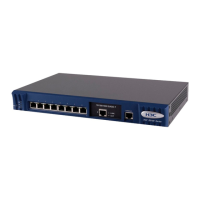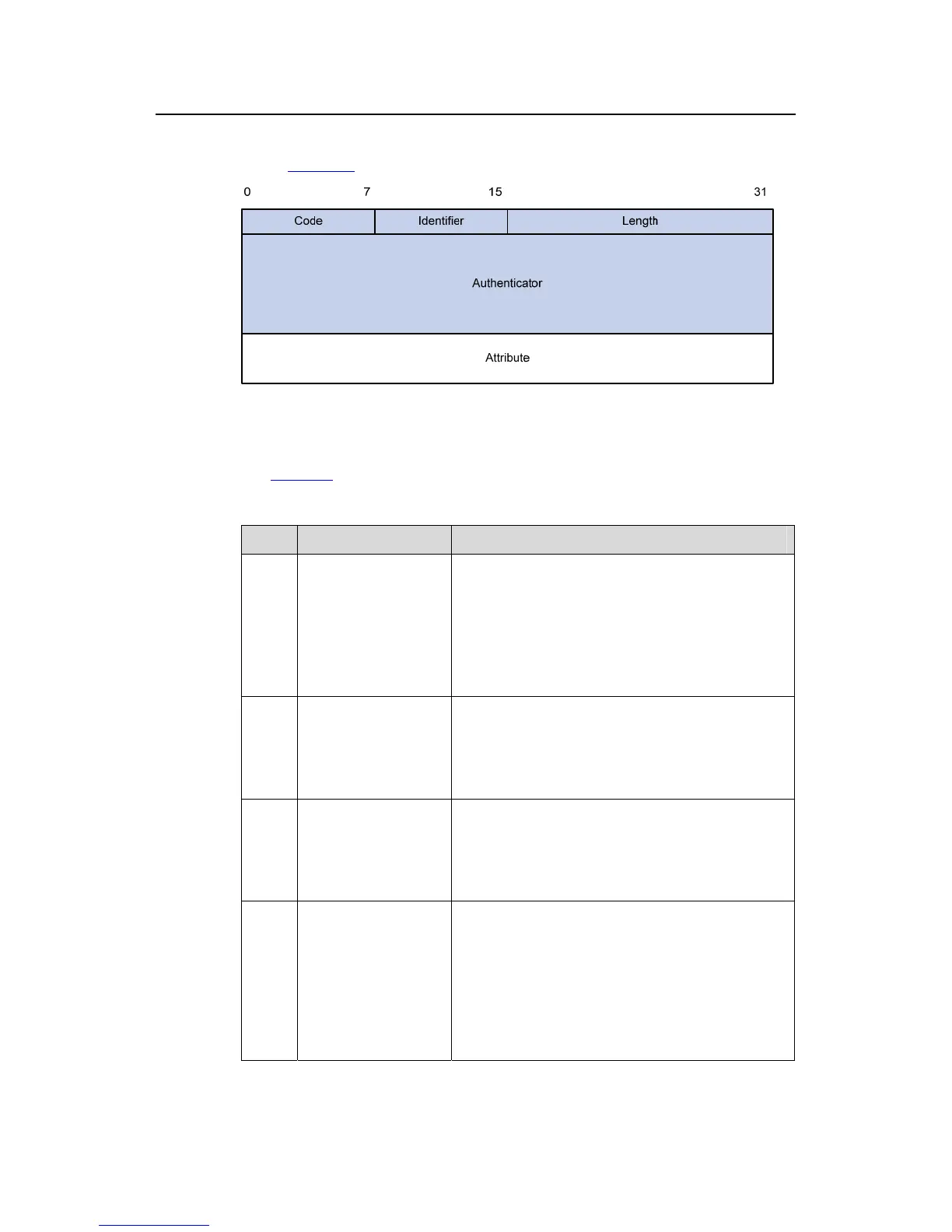1-5
adopts the following mechanisms: timer management, retransmission, and backup
server.
Figure 1-3 depicts the format of RADIUS messages.
Figure 1-3 RADIUS message format
1) The Code field (one byte) decides the type of RADIUS message, as shown in
Table 1-1.
Table 1-1 Description on the major values of the Code field
Code Message type Message description
1 Access-Request
Direction: client->server.
The client transmits this message to the server to
determine if the user can access the network.
This message carries user information. It must
contain the User-Name attribute and may contain
the following attributes: NAS-IP-Address,
User-Password and NAS-Port.
2 Access-Accept
Direction: server->client.
The server transmits this message to the client if all
the attribute values carried in the Access-Request
message are acceptable (that is, the user passes
the authentication).
3 Access-Reject
Direction: server->client.
The server transmits this message to the client if
any attribute value carried in the Access-Request
message is unacceptable (that is, the user fails the
authentication).
4 Accounting-Request
Direction: client->server.
The client transmits this message to the server to
request the server to start or end the accounting
(whether to start or to end the accounting is
determined by the Acct-Status-Type attribute in the
message).
This message carries almost the same attributes
as those carried in the Access-Request message.

